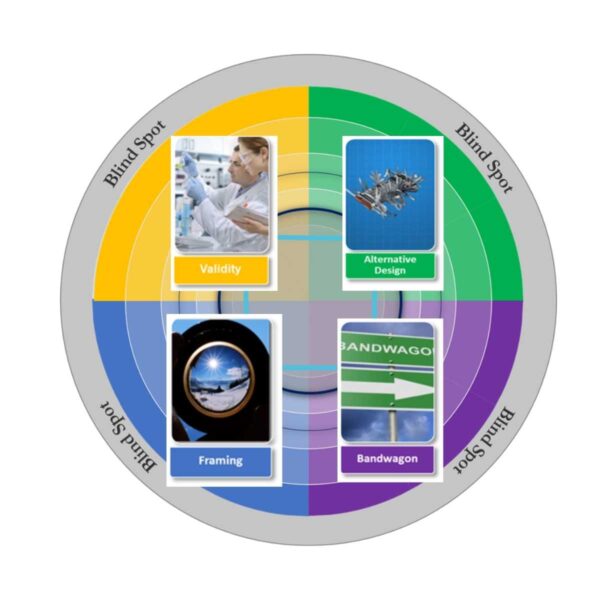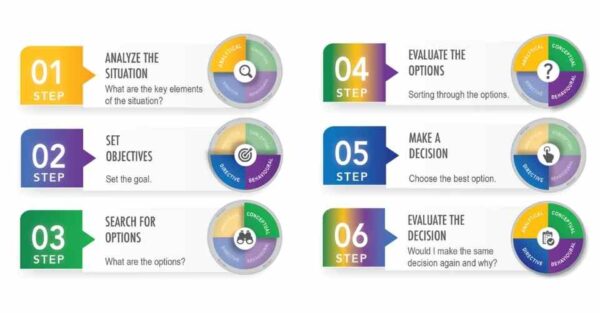Decision-Making Styles Explained
Decision-making, by definition, is the process of weighing alternatives and finding a solution to a problem and can change according to the situation in order to be most effective. This ability, to apply such situational decision-making, though, is down to individual experience, personality and dexterity. To determine an individual style or combination of styles, four distinct decision-making styles exist: Directive, Analytical, Conceptual and Behavioural, displayed graphically to highlight individual decision-making style preference. Effective leadership requires balanced decision-making through experiencing all four quadrants in perspective. These styles can be summarised as:
Directive Style: This style exhibits a low tolerance for ambiguity and these decision-makers are efficient, rational and logical in the way they think. Individuals with this style are more focused on the short term and are generally quick to make decisions.
Analytic Style: As opposed to the directive style, a person with an analytic decision-making style has greater tolerance to ambiguity. They are careful decision-makers that like to be well informed and thoroughly assess their options before making a decision.
Conceptual Style: Conceptual decision-makers are generally very broad in their approach and consider all available alternatives. They are long-term oriented and are usually capable of formulating creative solutions to problems.
Behavioural Style: People with a behavioural decision-making style work well with others, are open to suggestions and are concerned about the achievements of their team. They generally try to avoid conflict and place importance on their acceptance by others.
Judgemental Heuristics
Individuals are sometimes prone and vulnerable to a variety of systematic mistakes when making decisions. Such errors of judgement or mistakes are generally associated with a particular individually held bias or series of biases; often referred to as ‘judgemental heuristics’. These are often represented through rules of thumb or shortcuts that individuals use to reduce information-processing demands. Biases are used unconsciously to help decision-makers reduce uncertainty inherent within the decision-making process. Because these shortcuts represent knowledge gained from past experience, they can help decision-makers evaluate current problems. Conversely, they can also lead to systematic errors that erode the quality of decisions. Some typical biases, that drive particular decision-making styles towards the extremities of the four quadrants, include:
Framing: Blinkers on, not wanting to look around for data or people’s perspectives, and ready to make the decision now
Validity: I need more data, I need to be sure of my answer before I make the decision
Alternative Design: Yes, what is in front of me will work, but I want us to consider other options before we make any decisions
Bandwagon: Go with the flow and happy to let others make the decision

How to overcome DMS Biases?
To assist leaders in achieving a more balanced decision-making style, the ‘six step’ process to effective decision-making is proposed. Following these steps enables leaders to experience all four of the decision-making quadrants, mitigating individual biases, and overcoming the traps that certain dominant styles often fall into. Following the steps helps maintain focus on making a balanced decision every time.

If you are interested in learning more about your Decision-Making Style and how to overcome the biases that come with it, sign up for Smart Choice, online leadership training from Ingenium.